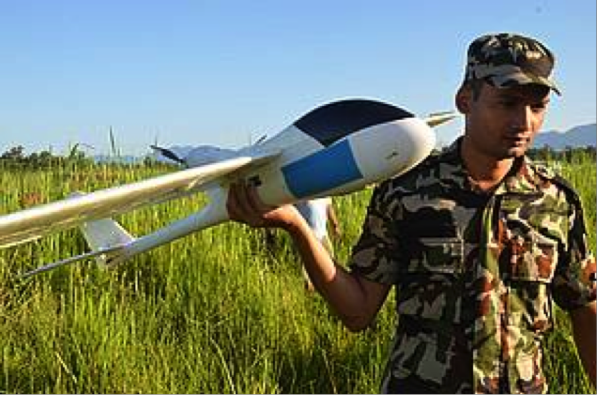 Nepal’s antipoaching efforts received a major boost this week as park rangers and army personnel learn how to operate unmanned aircraft in two national parks in a training programme organized by WWF.
Nepal’s antipoaching efforts received a major boost this week as park rangers and army personnel learn how to operate unmanned aircraft in two national parks in a training programme organized by WWF.
Nepal is home to rhinos, tigers and elephants, among the world’s most vulnerable species. Poaching of these and many other animals is at an all-time high and the hope is that UAS technology will help capture poachers in the act and deter others from even trying.
“Nepal is committed to stopping wildlife crime, which is robbing Nepal of its natural resources, putting the lives of rangers and local communities at risk, and feeding into global criminal networks,” said General Krishna Acharya, Director of Nepal’s Department of National Parks and Wildlife Conservation. “Technologies like these non-lethal UAS could give our park rangers a vital advantage against dangerously armed poachers.”
Nineteen park rangers and Nepal army personnel were trained to use the UAS by developer Mr. Lian Pin Koh, an ecologist at the Swiss Federal Institute of Technology Zurich. Participants learned how to use the planes and conducted field tests in Bardia National Park.
Traditionally, effective monitoring of national parks has depended largely on accessibility of the terrain by anti-poaching patrols as well as prior intelligence on poachers in the vicinity.
The UAS gives the patrols a new strategic advantage with an eye in the sky, allowing them access into previously unreachable areas and a safe view of illegal activities on the ground. The presence of a UAS also serves as a deterrent to poachers and illegal loggers since they now know that the parks are being monitored both on the ground and from above.
The GPS-enabled FPV Raptor model planes are light enough to be launched by hand, filming the ground below with a still or video camera. They can fly a pre-programmed route of about 30km at a maximum elevation of 200 meters for up to 50 minutes. The battery can be recharged in about half an hour. Each UAS costs about $2500, making it affordable even for developing countries like Nepal.
“WWF is excited to be part of this field test of new technology in partnership with the government of Nepal,” said Anil Manandhar, Country Representative of WWF Nepal. “We see this as a potentially powerful new tool to improve protection of Nepal’s national parks from illegal activities like poaching and logging.”
Source: WWF

The picture looks hilarious. It was as if the soldier is playing with a paper plane. Is this a joke? Am I supposed to laugh?
MotionModels